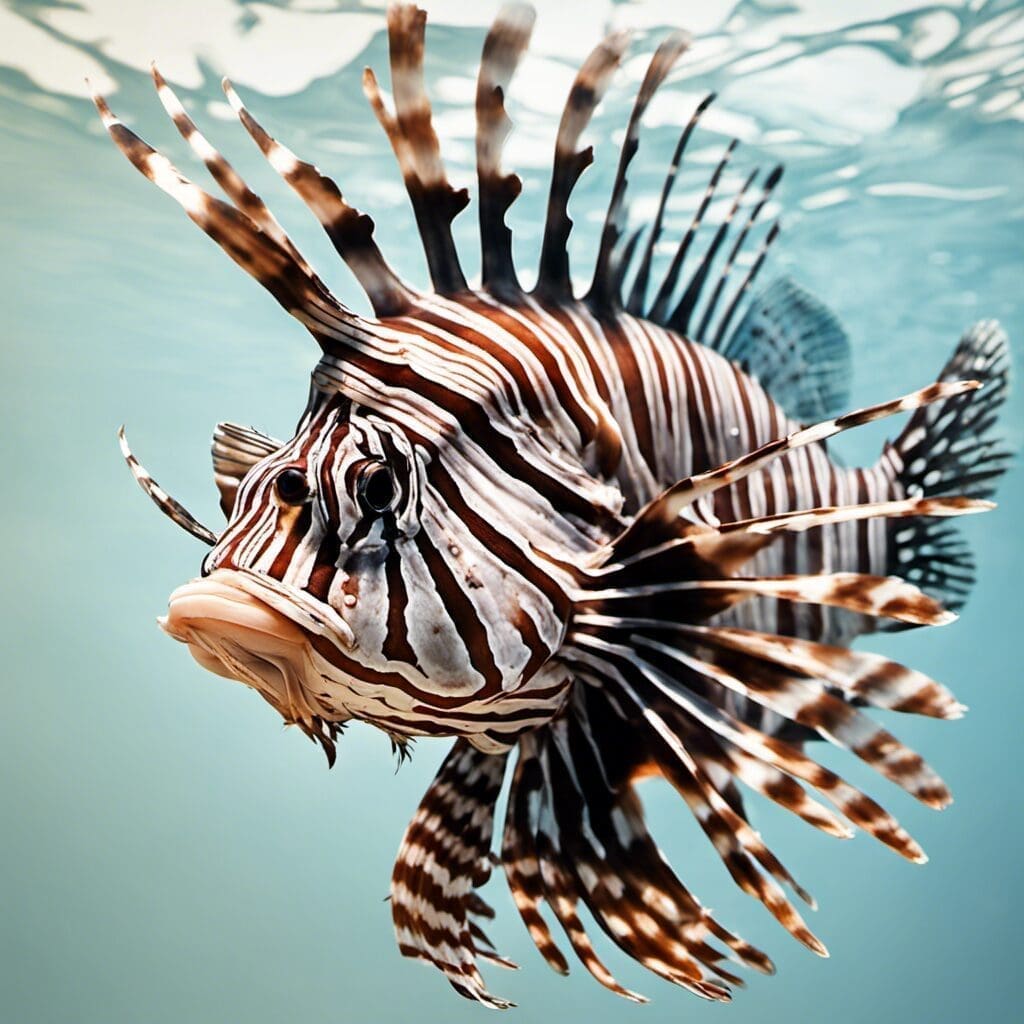Introduction
The Lionfish, scientifically named Pterois, belongs to the Scorpaenidae family. It is known for its highly recognizable and distinct fan-like fins and venomous spines.
Conservation Status
The Lionfish is currently not listed as a threatened species by the International Union for Conservation of Nature (IUCN). Despite this, efforts are being made widely to control its rapidly increasing populations in non-native habitats.
Current Status
Lionfish, though not native to North and South America, is expanding in large numbers in these regions, threatening local marine life.
Conservation Efforts
Many local communities and even tourists are encouraged to participate in lionfish hunting efforts to control their population.
Statistics
| Length | Weight | Average Lifespan |
|---|---|---|
| Average: 12 in, Range: 11-15 in | Average: 2.6 lb, Range: 1-3 lb | 10 Years |
Distribution
Regions/Countries
Native to the Indo-Pacific region, lionfish have now invaded the western Atlantic region, Caribbean Sea, and the Mediterranean Sea.
Migration Patterns
Lionfish aren’t known for having significant migration patterns. However, their rapid expansion into new territories is a direct result of human activity, via marine aquarium trade.
Habitats
Water Type
Lionfish are found in saltwater environments.
Depth Range
The species predominantly exist in rocky and coral reefs, lagoons, and mangroves at depths of up to 300 meters.
Temperature Range
Lionfish are extremely adaptable and thrive in waters with temperatures ranging from 50 to 91 degrees Fahrenheit.
When and Where to See
Seasonal Patterns
Lionfish can be spotted year-round, with larger populations visible during summer and autumn.
Time of Day
They are largely nocturnal and are seen more actively hunting for prey during the evening and night.
Best Fishing Locations
Top 10 Places
- Florida, USA
- The Bahamas
- Belize
- Cuba
- Cayman Islands
- Honduras
- Aruba
- Turks and Caicos
- Mexico (Yucatan Peninsula)
- Curacao
General Tips
Lionfish are often found hiding in crevices and ledges in reefs. They can be spotted at all hours but are typically more accessible and visible in deeper waters at night.
How to Catch
Preferred bait or lures
Lionfish are not typically caught using conventional fishing methods due to their spines. They are typically caught using spears or hand-held nets.
Identification Guide
Physical Characteristics
Lionfish are recognizable by their fan-like fins, elongated dorsal spines, and a variety of colors from red, white, cream, or black bands.
Culinary
How to Cook
The Lionfish’s white meat is often grilled, sauteed, or used in ceviche, after careful removal of the venomous spines.
Taste Profile
Lionfish provide a delicate, buttery fish meat that’s often compared to popular fish like Grouper or Mahi Mahi.
Additional Information
Behavior
Lionfish are predatory and non-migratory. They hunting smaller fish, shrimps, and crabs. The species is known for its mating ritual, where males circle females, with their colors intensified.
Predators and Threats
Besides humans, adult lionfish have few known predators. But in non-native environments, they represent a significant threat to native wildlife.
References and Further Reading
Sources
National Geographic
U.S Fish and Wildlife Service
Recommended Readings
Florida Museum
National Institutes of Health

